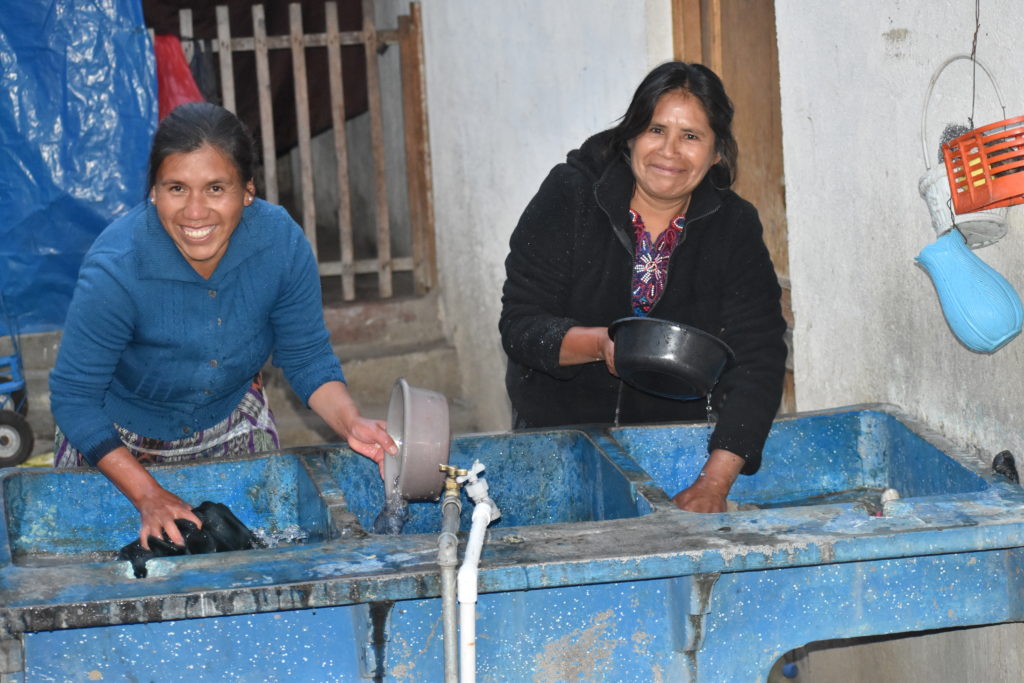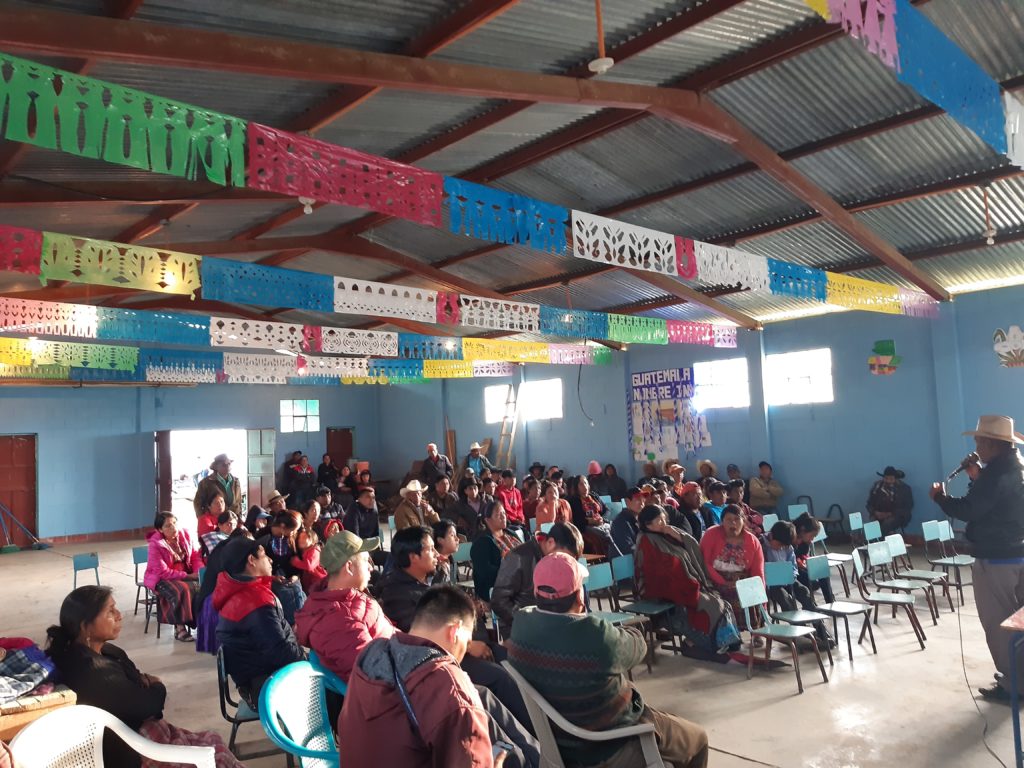Creating a path for water and peace
By Erin Treinen
Vista Hermosa, Guatemala—Home to 361 people, this community in Comitancillo, San Marcos, Guatemala, is small, but it has grown substantially in recent years, and the more limited infrastructure from two decades ago started to cause tension.
Water access became a thorny issue, particularly during the region’s dry season. Residents on the hill of Vista Hermosa did not have water, while people in the lower areas of the community had plenty and were not conserving it.
The burden fell heavily on the shoulders of women and youth who had to collect water.

“When water is scarce, a lot of people have to go to other communities to get water, or sometimes they walk to a small spring in town and carry it back with them to their homes,” says Veronica Felix Velasquez, community member and public-school teacher.
The community tried building public washbasins, but they became overcrowded and added to the tension. They tried rationing water by sectors, which upset residents and local authorities. The community also tried digging a well, but it was expensive and did not produce enough water to be helpful.
Conflict like this erodes social cohesion. The Peacebuilding Project, Teijiendo Paz in Spanish, works in 130 communities in the Western Highlands of Guatemala — including Vista Hermosa — to reduce social conflict and violence and strengthen social cohesion.
Tejiendo Paz is a 6.5-year project funded by the U.S. Agency for International Development (USAID) and implemented by Creative Associates International with PartnersGlobal and ProPaz. It strengthens inclusive, locally led participation, dialogue, and mapping to identify, prioritize and develop action plans that address sources of conflict.
Community participation is key to how Tejiendo Paz addresses social conflict and cohesion in the Western Highlands. Vista Hermosa prioritized addressing its water issues, and the project began by talking with local leaders, authorities, women, and youth about the impact of water scarcity and poor water distribution.
The community decided to create a water regulation to distribute the water to homes, and Tejiendo Paz provided the connections and training to bring their idea to life.

First, the project linked the community with organizations and institutions at municipal and departmental levels that could provide guidance and support. Community authorities held meetings with fellow USAID-supported project Nexos Locales, the Municipal Water and Sanitation Office, the Association for the Integral Development of Municipalities of San Marcos Highlands and the Attorney General’s office.
Next, Tejiendo Paz and other organizations began training local leaders and community authorities on creating and implementing a water regulation. Topics included the need for the regulation, the current status of the infrastructure, citizen rights and obligations, the legal framework and water administration, setting water tariffs, and documenting the water regulation.
Community authorities took what they learned and created a water regulation outlining the fair distribution of water to all homes in Vistas Hermosa, established a tariff to maintain the integrity of the infrastructure, and set expectations for the community leaders and authorities. They also founded a community Water and Sanitation Commission to oversee the implementation of the water regulation.
After thoughtful planning and community organizing, the water regulation was validated and approved by the community at a town assembly on September 8, 2022.
“The local authorities and members of the COCODE (the Spanish acronym for Community Development Council) weren’t sure if the community would support it, but they did,” says Armando Marroquín, a resident of Vista Hermosa and coordinator of its COCODE. “The community didn’t fail us.”
Estuardo Aguilón Garcia, Tejiendo Paz’s community facilitator, was excited to overhear comments like, “For the women of the community, this is an excellent regulation because it will guarantee more water in our homes. In past years, we suffered because we would have to collect water from the spring or river.”
In addition to improving water access, the water regulation process has promoted unity in Vista Hermosa.
“Before this, community members weren’t always supportive of projects, but now we feel more support from the community,” says Marroquín.
Arnoldo Perez, president of the Community Water and Sanitation Commission (CAS in Spanish), noticed that town meetings went from low attendance to a big community event and has seen attitudes change.
“Many of us are not used to having a water regulation in the community, and so we would use water how we wanted it and when we wanted it. The water regulation in Vista Hermosa is benefiting the community,” says Perez.
